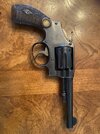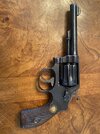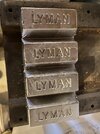NO! do not do that. It is not a consistent way to weigh ammo. The brass and bullet can vary in weight.
Just get a bullet puller and break them down. If they are really crimped try seating the bullet a little more to break the crimp
Or you can put them in the press with the bullet sticking up through the die and hold on to it with diagonal cutter and pull it out with the ram.
Here's a quick and easy way to pull large caliber bullets from cartridges just using a common cable cutter and your reloading press. The process is fast and...

www.youtube.com





